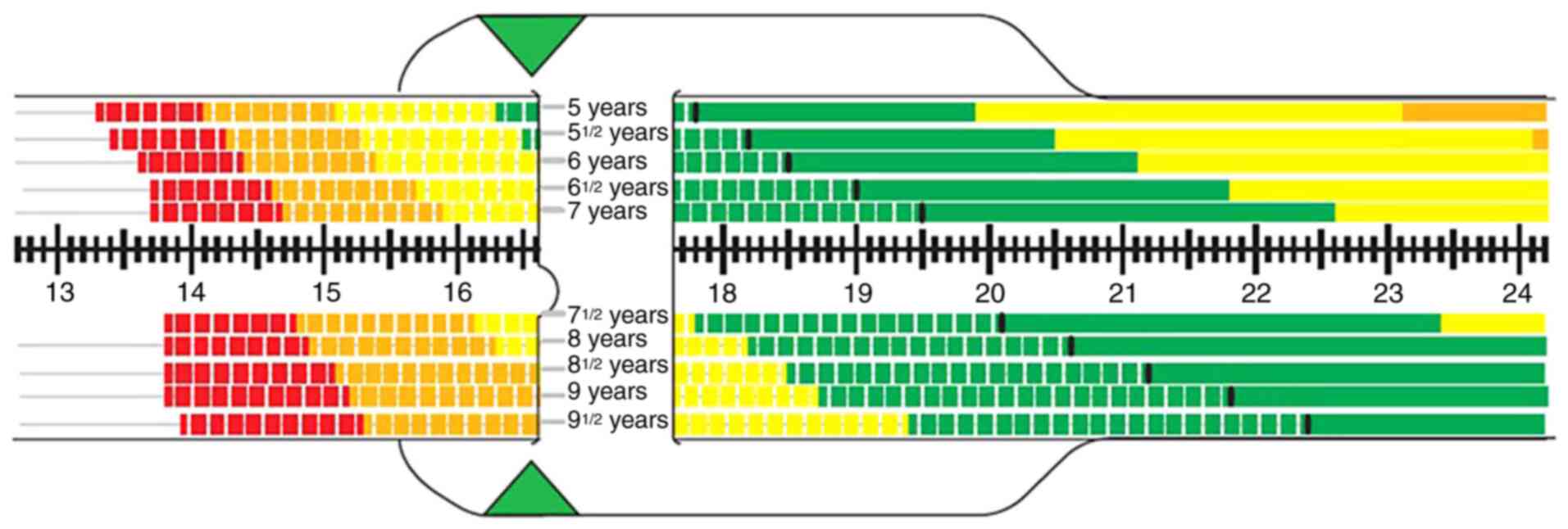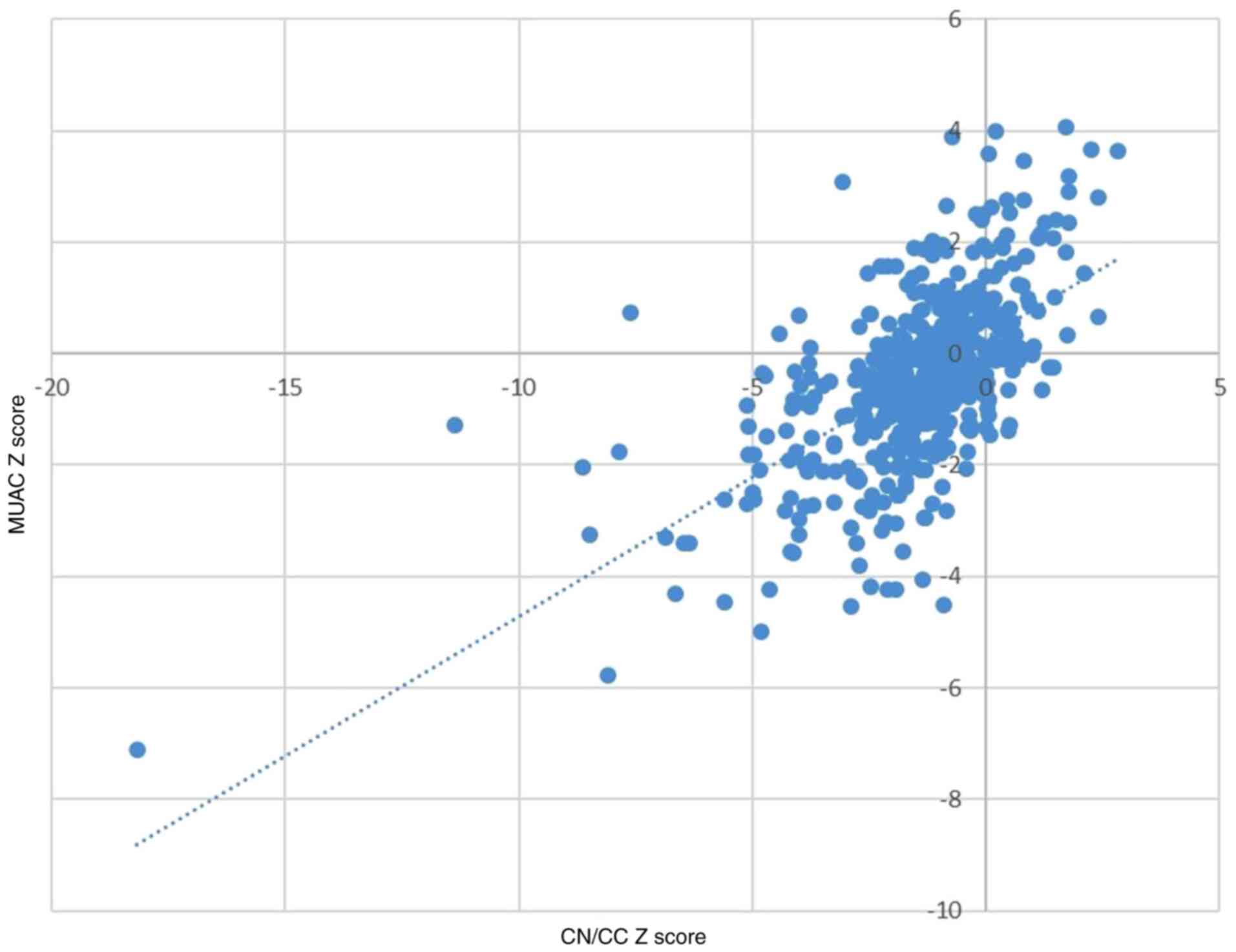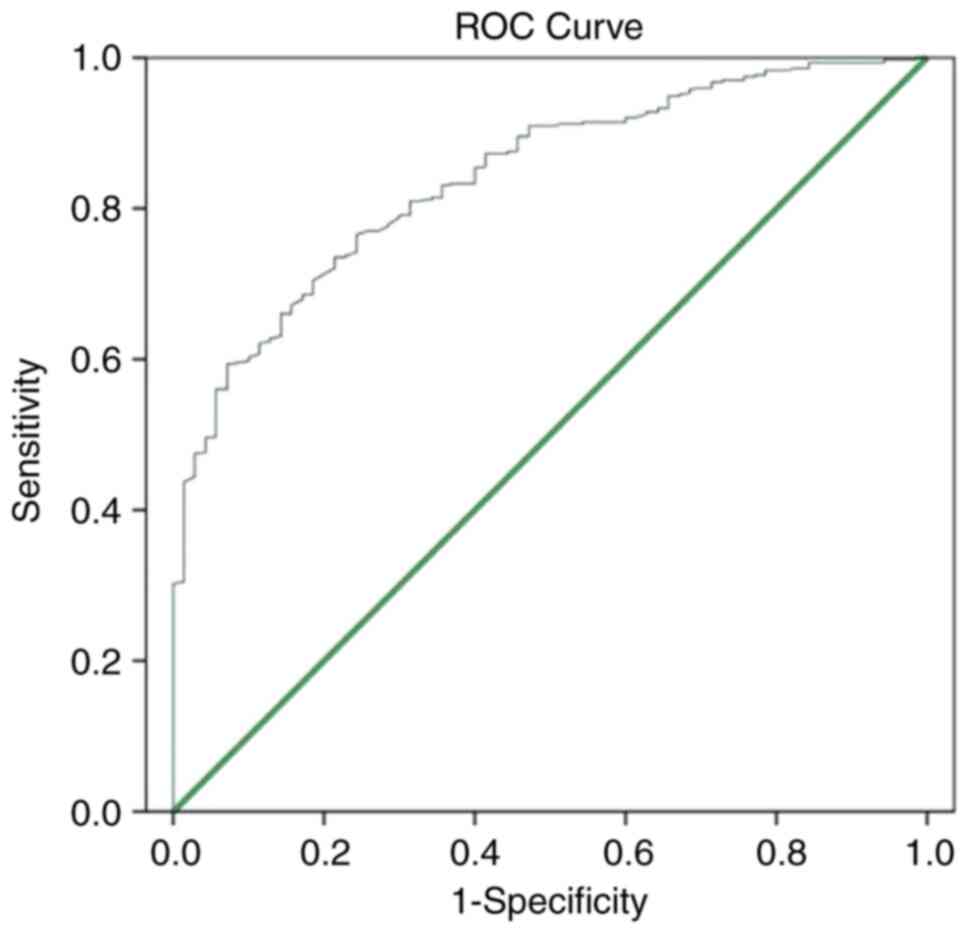|
1
|
Abdelhadi RA, Bouma S, Bairdain S, Wolff
J, Legro A, Plogsted S, Guenter P, Resnick H, Slaughter-Acey JC and
Corkins MR: ASPEN Malnutrition Committee. Characteristics of
hospitalized children with a diagnosis of malnutrition: United
States, 2010. JPEN J Parenter Enteral Nutr. 40:623–635.
2016.PubMed/NCBI View Article : Google Scholar
|
|
2
|
Vermilyea S, Slicker J, El-Chammas K,
Sultan M, Dasgupta M, Hoffmann RG, Wakeham M and Goday PS:
Subjective global nutritional assessment in critically ill
children. JPEN J Parenter Enteral Nutr. 37:659–666. 2013.PubMed/NCBI View Article : Google Scholar
|
|
3
|
Briend A, Maire B, Fontaine O and Garenne
M: Mid-upper arm circumference and weight-for-height to identify
high-risk malnourished under-five children. Matern Child Nutr.
8:130–133. 2012.PubMed/NCBI View Article : Google Scholar
|
|
4
|
Garenne M, Maire B, Fontaine O and Briend
A: Adequacy of child anthropometric indicators for measuring
nutritional stress at population level: A study from Niakhar,
Senegal. Public Health Nutrition. 16:1533–1539. 2012.PubMed/NCBI View Article : Google Scholar
|
|
5
|
World Health Organization: WHO Child
Growth Standards, 2006.
|
|
6
|
Mehta NM, Corkins MR, Lyman B, Malone A,
Goday PS, Carney LN, Monczka JL, Plogsted SW and Schwenk WF:
American Society for Parenteral and Enteral Nutrition Board of
Directors. Defining pediatric malnutrition: A paradigm shift toward
etiology-related definitions. JPEN J Parenter Enteral Nutr.
37:460–481. 2013.PubMed/NCBI View Article : Google Scholar
|
|
7
|
Hương PTT, Lâm NT, Thu NN, Quyen TC, Lien
DT, Anh NQ, Henry EG, Oliver L, Apovian CM, Ziegler TR and Lenders
C: Prevalence of malnutrition in patients admitted to a major urban
tertiary care hospital in Hanoi, Vietnam. Asia Pac J Clin Nutr.
23:437–444. 2014.PubMed/NCBI View Article : Google Scholar
|
|
8
|
Ministry of Health (2021). Nutrition
census 2019-2020. https://moh.gov.vn/tin-noi-bat/-/asset_publisher/3Yst7YhbkA5j/content/bo-y-te-cong-bo-ket-qua-tong-ieu-tra-dinh-duong-nam-2019-2020.
|
|
9
|
Lan BN, Ha TT, Linh VT, Thanh DC and Dung
LTT: Some factors related to malnutrition in pediatric cancer
patients under 5 years old at the National Children's Hospital.
Journal of Pediatrics Research and Practice. 5:31–37. 2021.(In
Vietnamese).
|
|
10
|
Hop T, Gross R, Sastroamidjojo S, Giay T
and Schultink W: Mid-upper-arm circumference development and its
validity in assessment of undernutrition. Asia Pac J Clin Nutr.
7:65–69. 1998.PubMed/NCBI
|
|
11
|
Hossain MI, Ahmed T, Arifeen SE, Billah
SM, Faruque A, Islam MM and Jackson AA: Comparison of midupper arm
circumference and weight-for-height z score for assessing acute
malnutrition in Bangladeshi children aged 6-60 mo: An analytical
study. Am J Clin Nutr. 106:1232–1237. 2017.PubMed/NCBI View Article : Google Scholar
|
|
12
|
Hartman C, Shamir R, Hecht C and Koletzko
B: Malnutrition screening tools for hospitalized children. Curr
Opin Clin Nutr Metab Care. 15:303–309. 2012.PubMed/NCBI View Article : Google Scholar
|
|
13
|
Linh PT, Hoa NPA, Thi N and Hong TT:
Micronutrient deficiencies status in children with chronic liver
disease at the national children's hospital. J Med Res.
160:116–126. 2022.
|
|
14
|
Roberfroid D, Huybregts L, Lachat C,
Vrijens F, Kolsteren P and Guesdon B: Inconsistent diagnosis of
acute malnutrition by weight-for-height and mid-upper arm
circumference: Contributors in 16 cross-sectional surveys from
South Sudan, the Philippines, Chad, and Bangladesh. Nutr J.
14(86)2015.PubMed/NCBI View Article : Google Scholar
|
|
15
|
Grellety E and Golden MH: Severely
malnourished children with a low weight-for-height have a higher
mortality than those with a low mid-upper-arm-circumference: I.
Empirical data demonstrates Simpson's paradox. Nutr J.
17(79)2018.PubMed/NCBI View Article : Google Scholar
|
|
16
|
Laillou A, Prak S, de Groot R, Whitney S,
Conkle J, Horton L, Un SO, Dijkhuizen MA and Wieringa FT: Optimal
screening of children with acute malnutrition requires a change in
current WHO guidelines as MUAC and WHZ identify different patient
groups. PLoS One. 9(e101159)2014.PubMed/NCBI View Article : Google Scholar
|

















